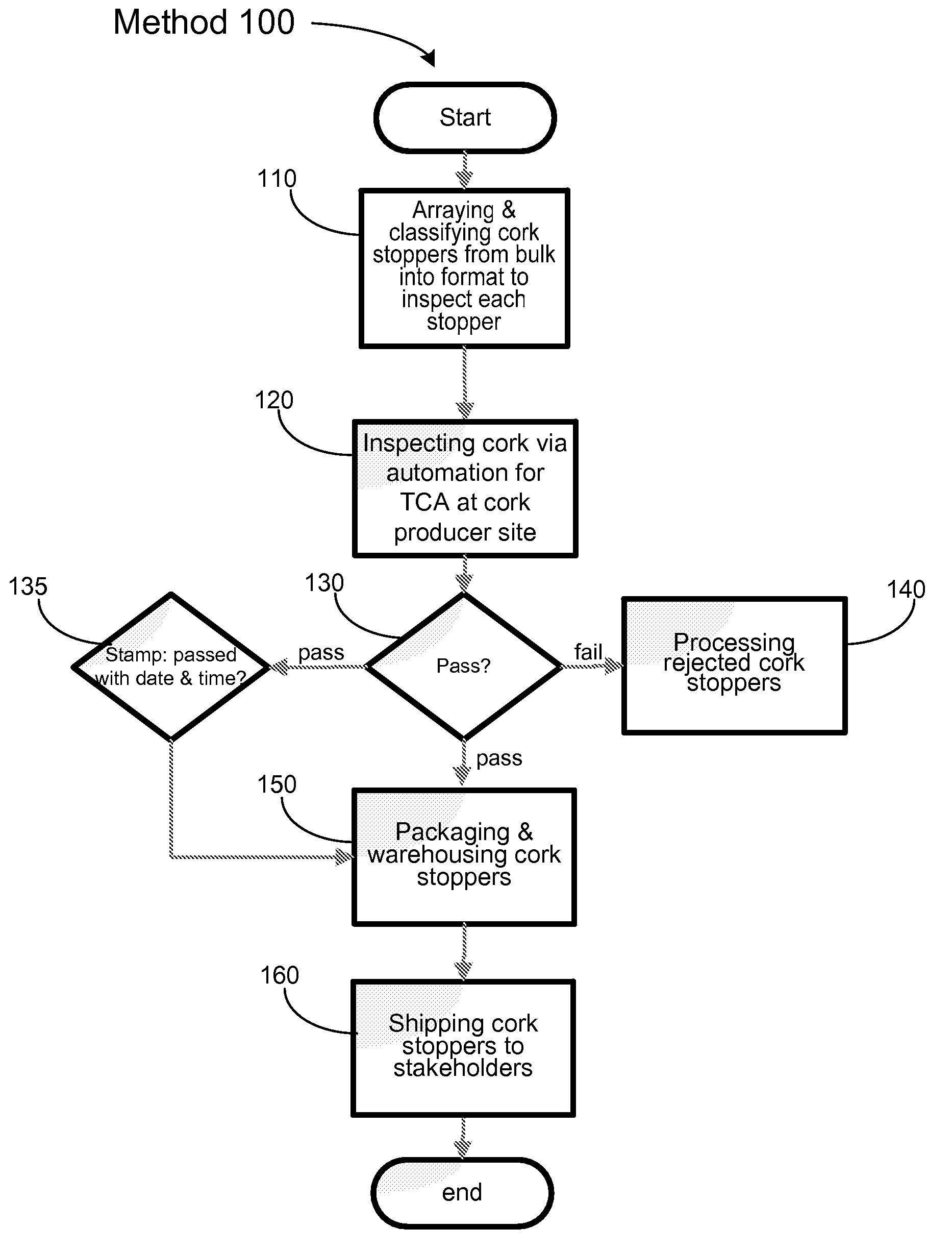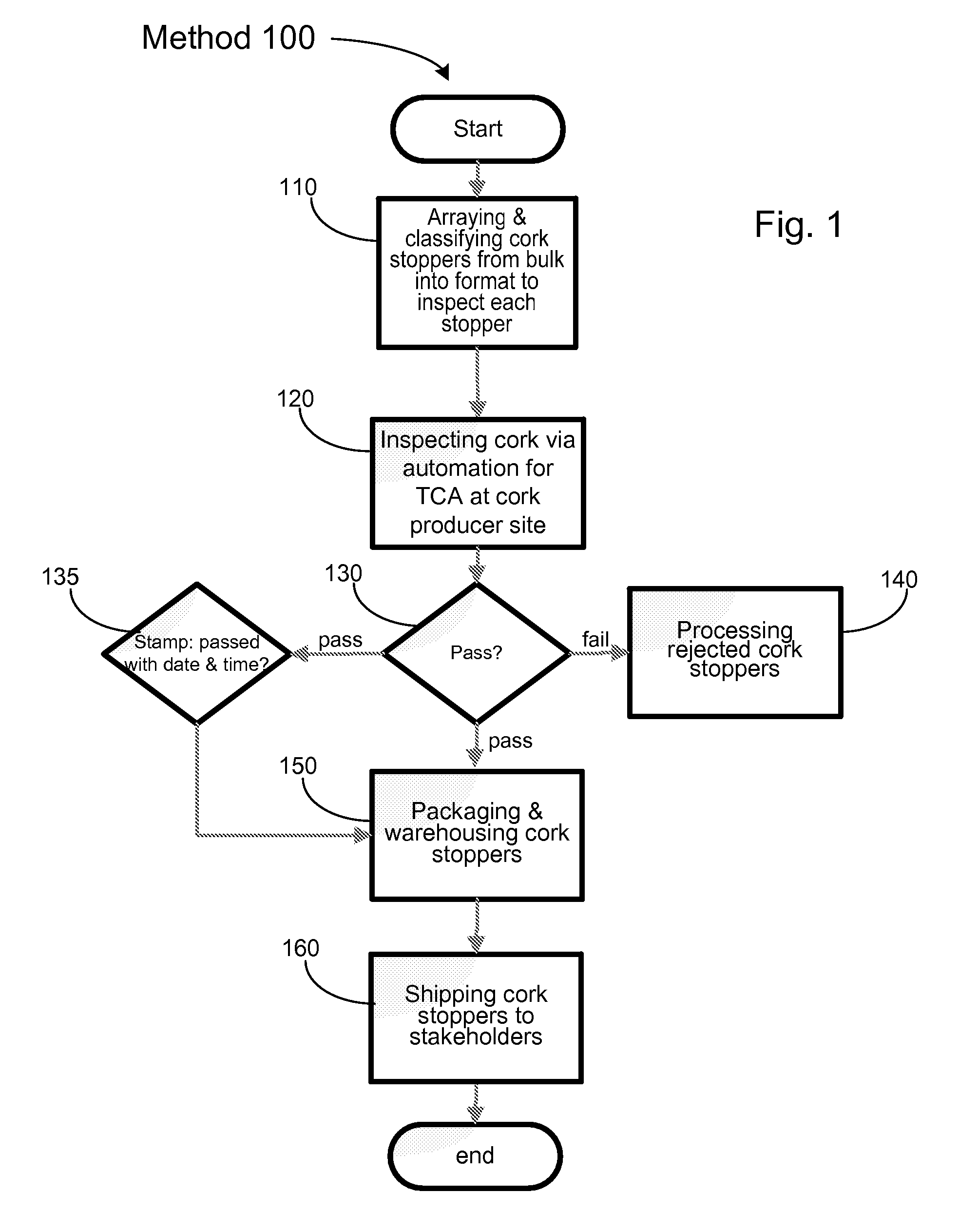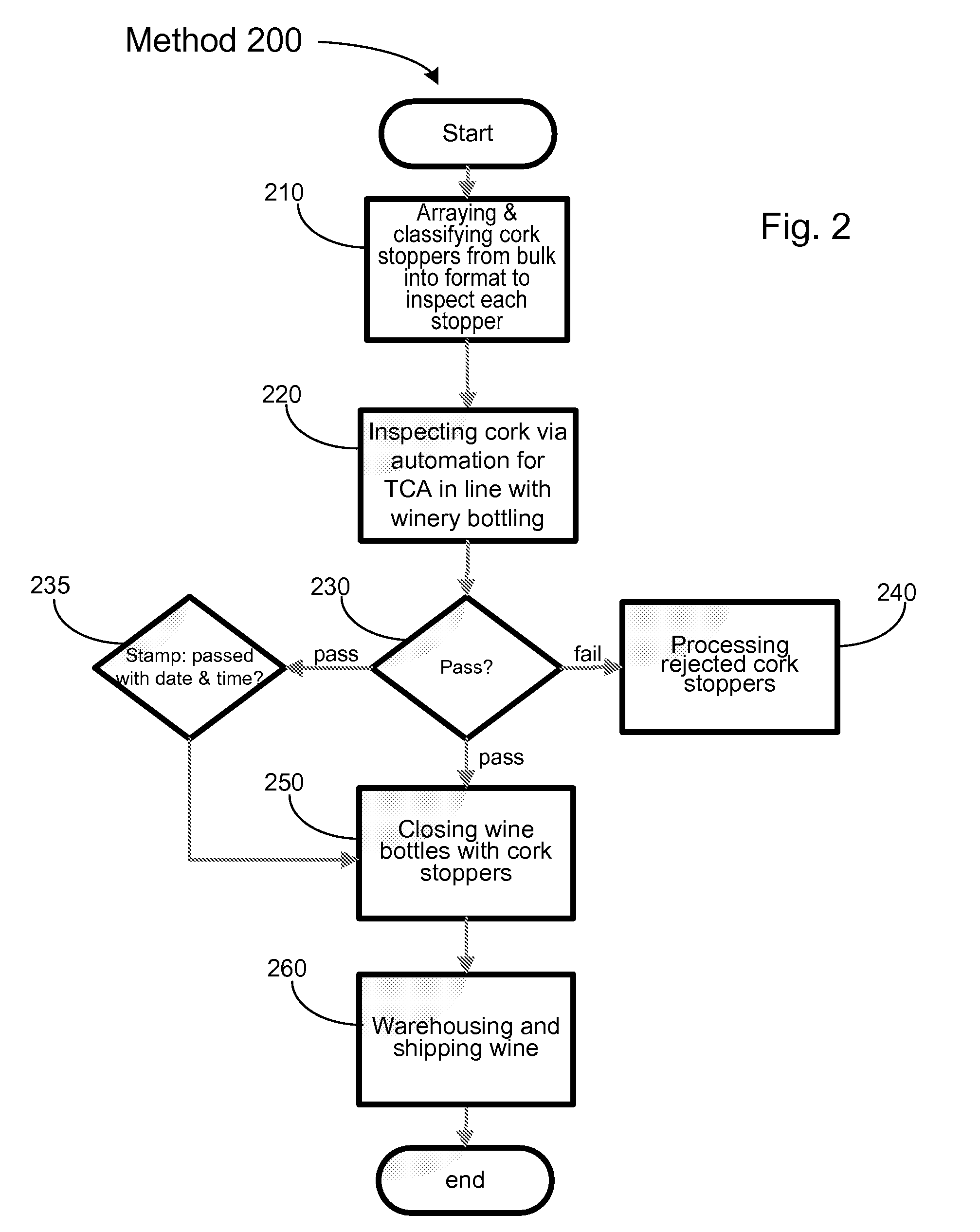Methods of detecting and eliminating tainted cork wine bottle stoppers
a cork wine bottle stopper and stopper technology, applied in the field of cork wine bottling, can solve the problems of affecting the taste of wine, high cost, and high quality of cork stoppers, and achieve the effect of not slowing down the bottling process
- Summary
- Abstract
- Description
- Claims
- Application Information
AI Technical Summary
Benefits of technology
Problems solved by technology
Method used
Image
Examples
Embodiment Construction
[0022]While the present description focuses on the use of cork stopper as a preferred seal and closure for bottles of wine, the skilled artisan will appreciate that the methods taught herein are equally applicable to a selection of cork stoppers for sealing bottles of other beverages such as whiskey and liqueurs as well as food products such as balsamic vinegar. As used herein, the term “third-party site” means a location of a bottling operation under the primary control of a party other than the party responsible for inspection and selection of cork stoppers. For example, the methods taught herein might be carried out by a party under contract to a beverage bottler at the bottler's place of business. As used herein, the terms device, apparatus, and machine are synonymous.
[0023]As used herein, the term “cork taint” means halogenated anisoles including trichloroanisole (TCA), tribromoanisole (TBA), tetrachloroanisole (TeCA), and pentachloroanisole (PCA), as well as the family of halo...
PUM
| Property | Measurement | Unit |
|---|---|---|
| porosity | aaaaa | aaaaa |
| temperature | aaaaa | aaaaa |
| pressure | aaaaa | aaaaa |
Abstract
Description
Claims
Application Information
 Login to View More
Login to View More - R&D
- Intellectual Property
- Life Sciences
- Materials
- Tech Scout
- Unparalleled Data Quality
- Higher Quality Content
- 60% Fewer Hallucinations
Browse by: Latest US Patents, China's latest patents, Technical Efficacy Thesaurus, Application Domain, Technology Topic, Popular Technical Reports.
© 2025 PatSnap. All rights reserved.Legal|Privacy policy|Modern Slavery Act Transparency Statement|Sitemap|About US| Contact US: help@patsnap.com



